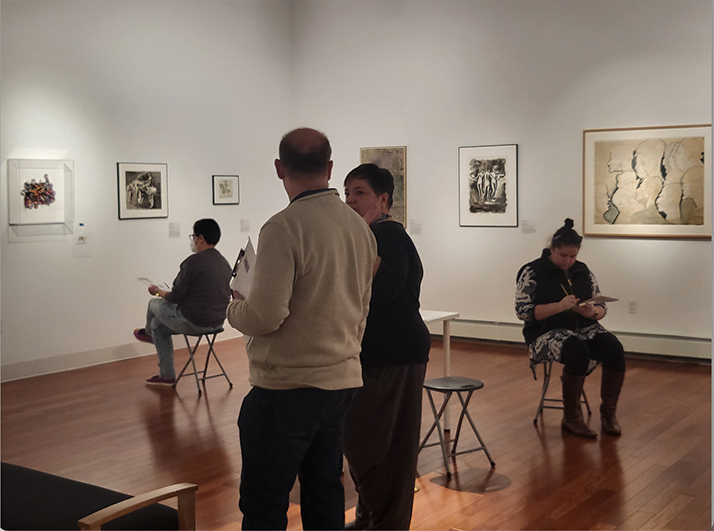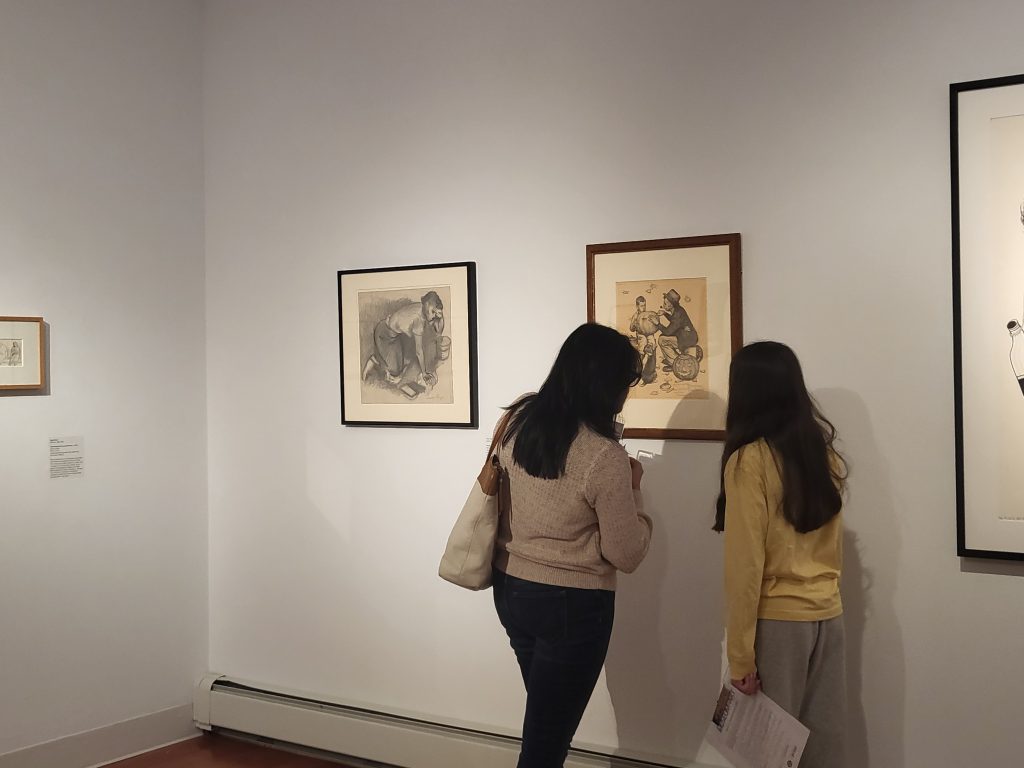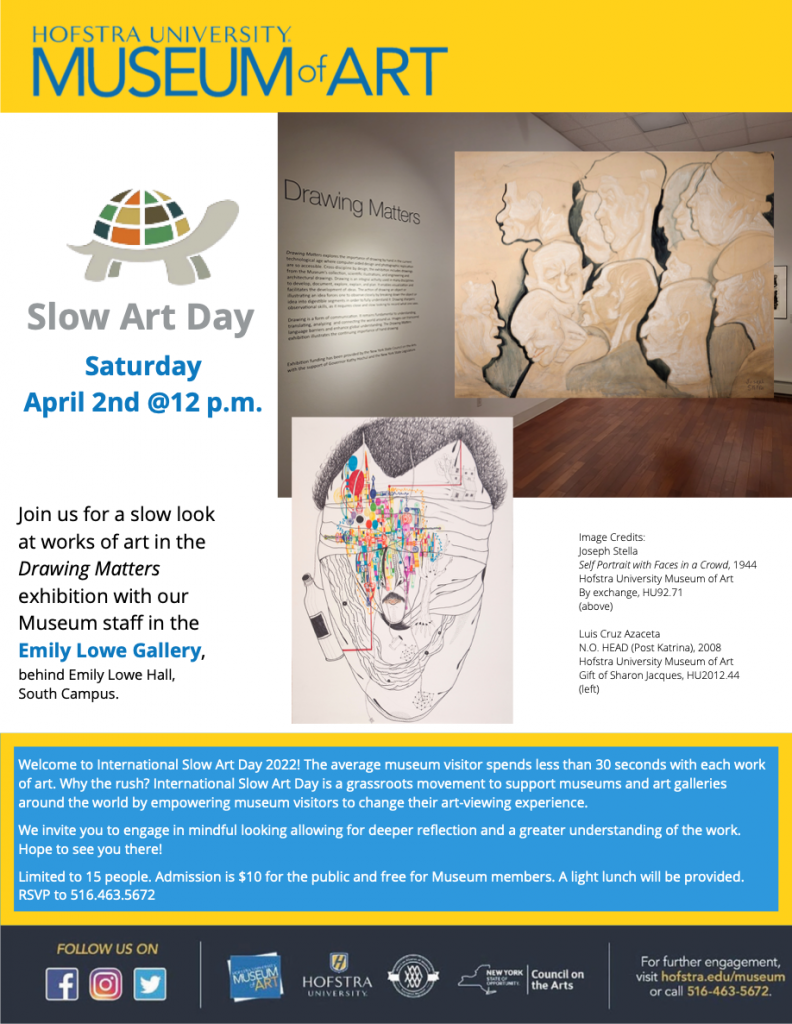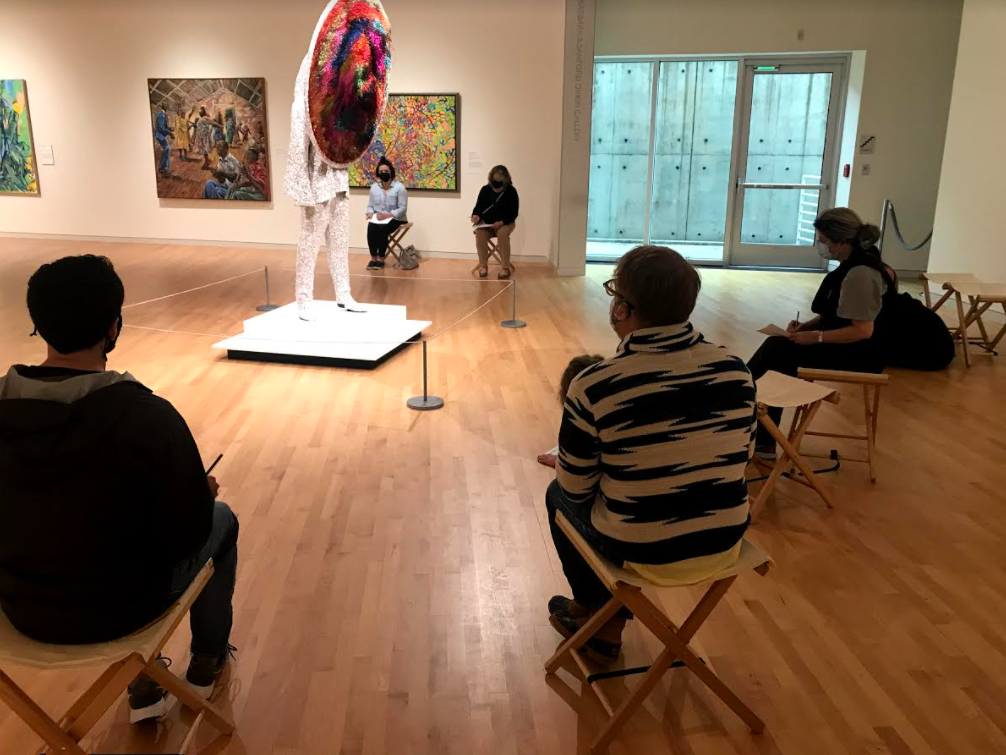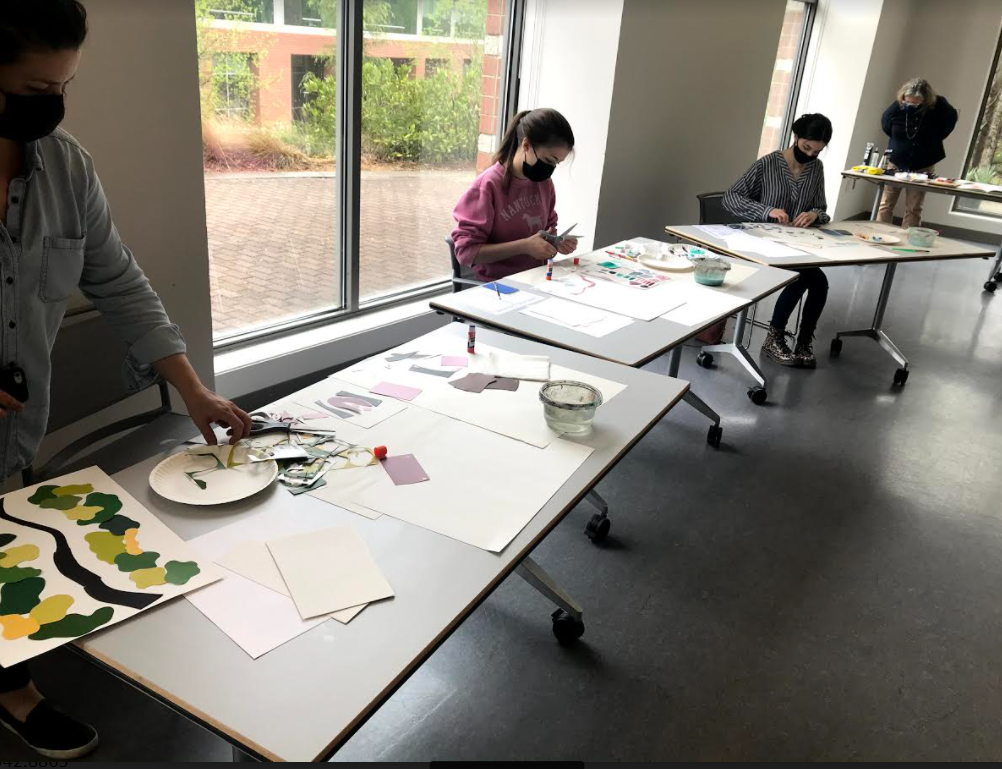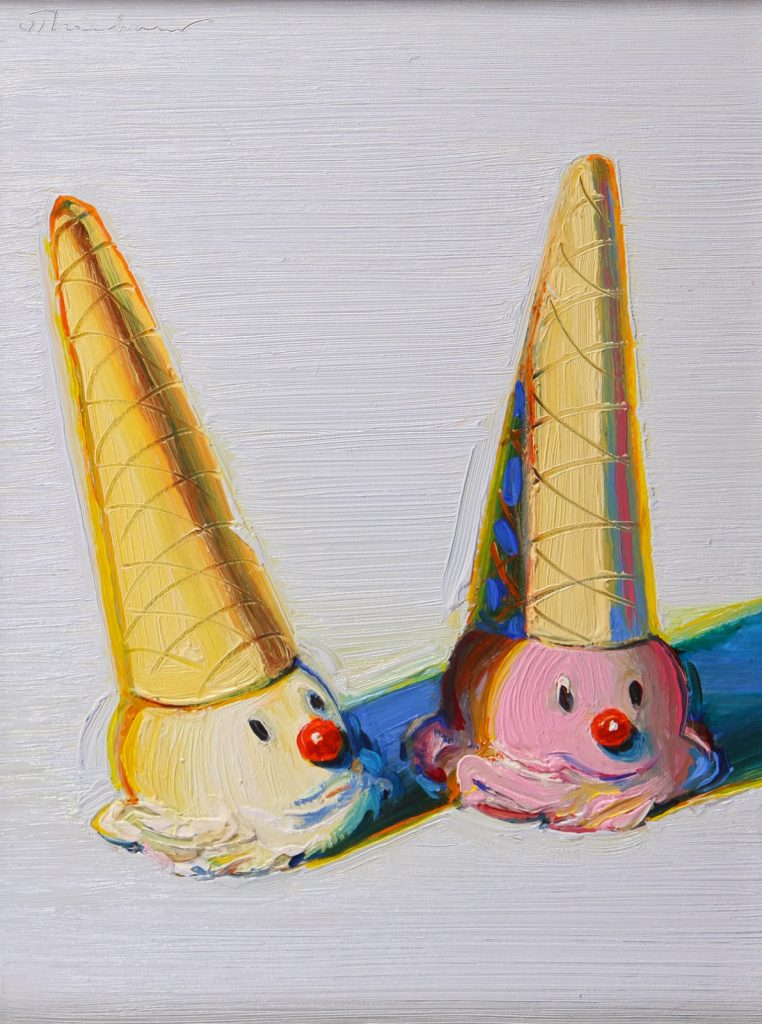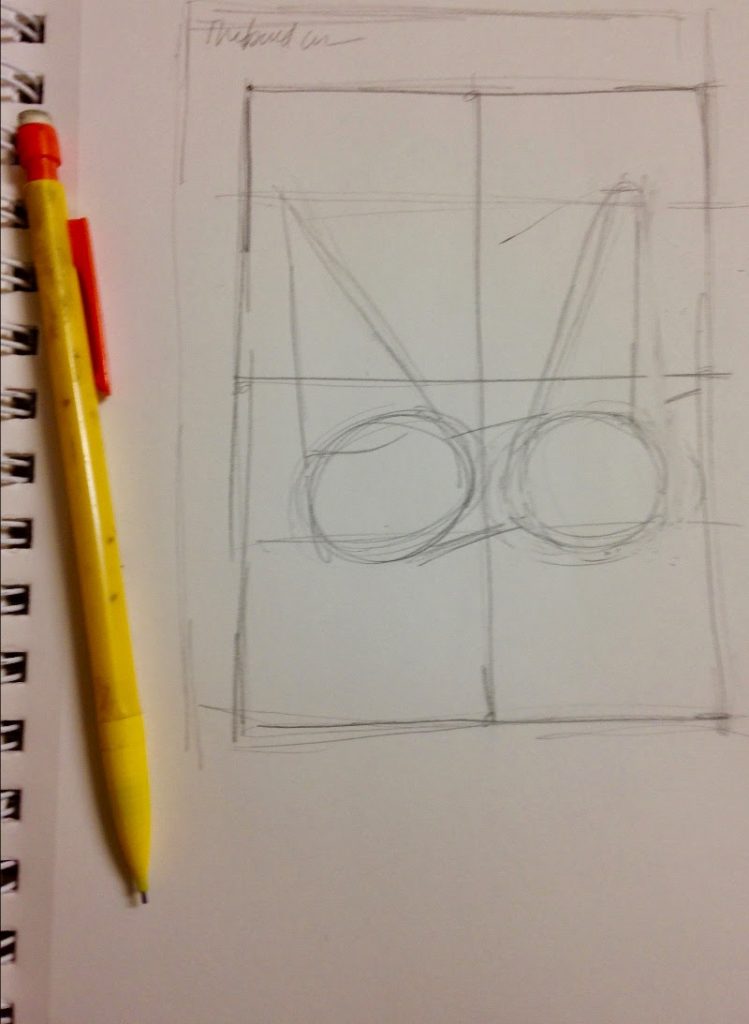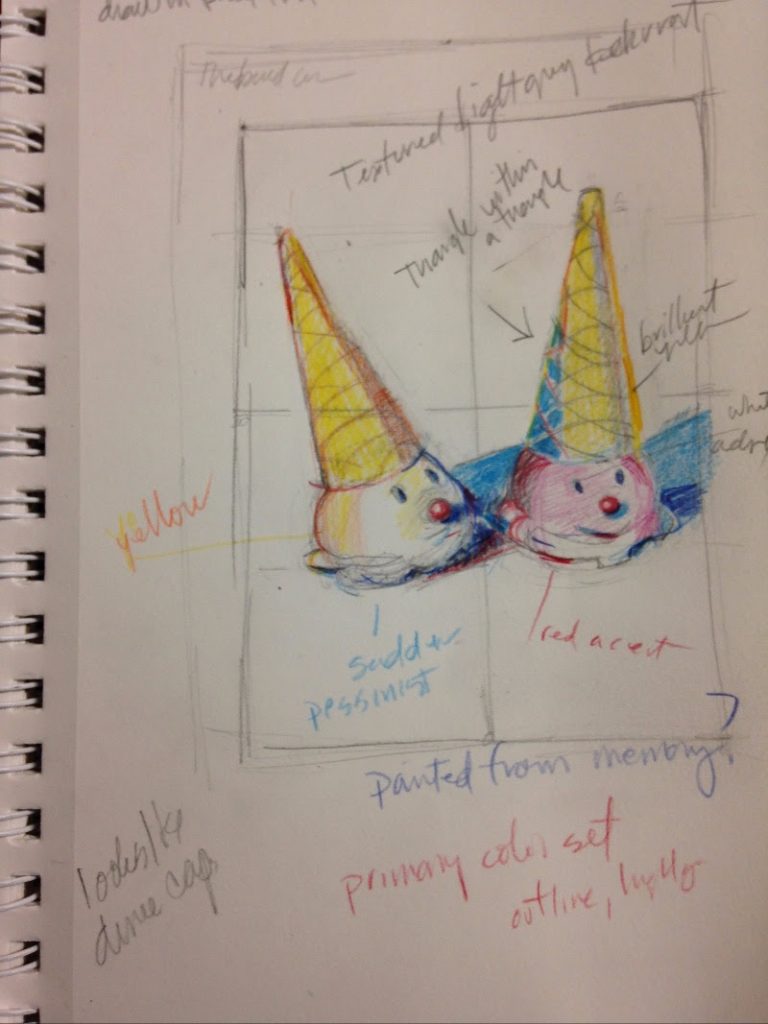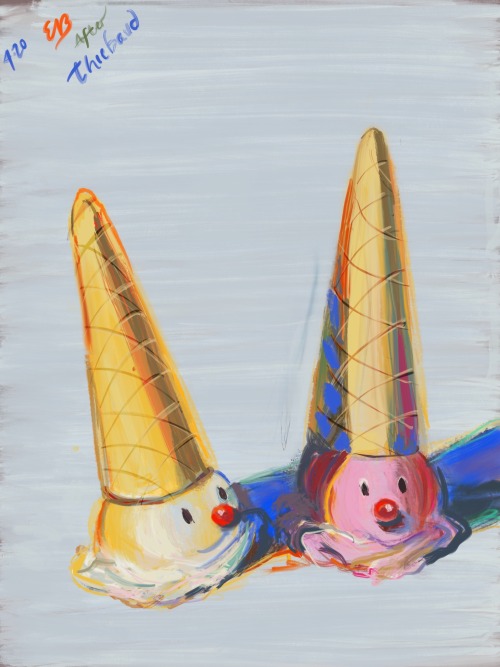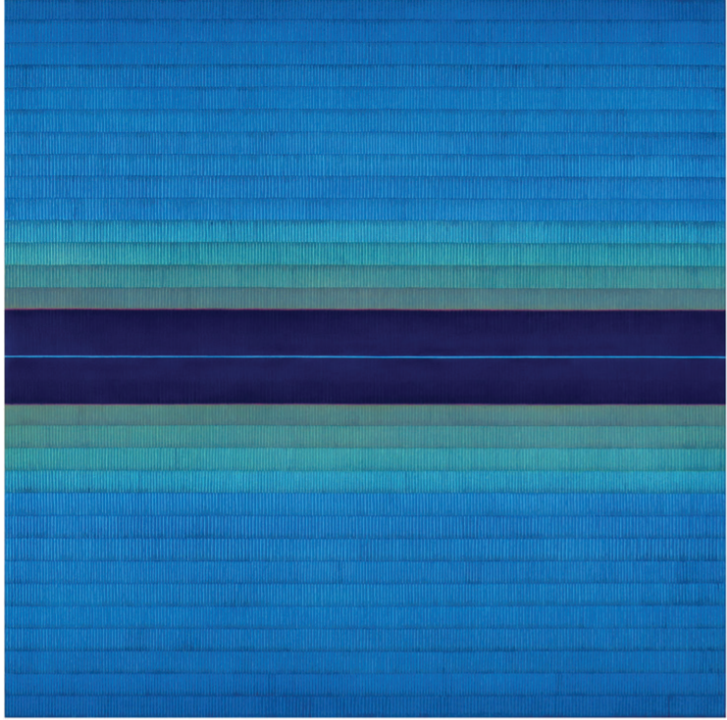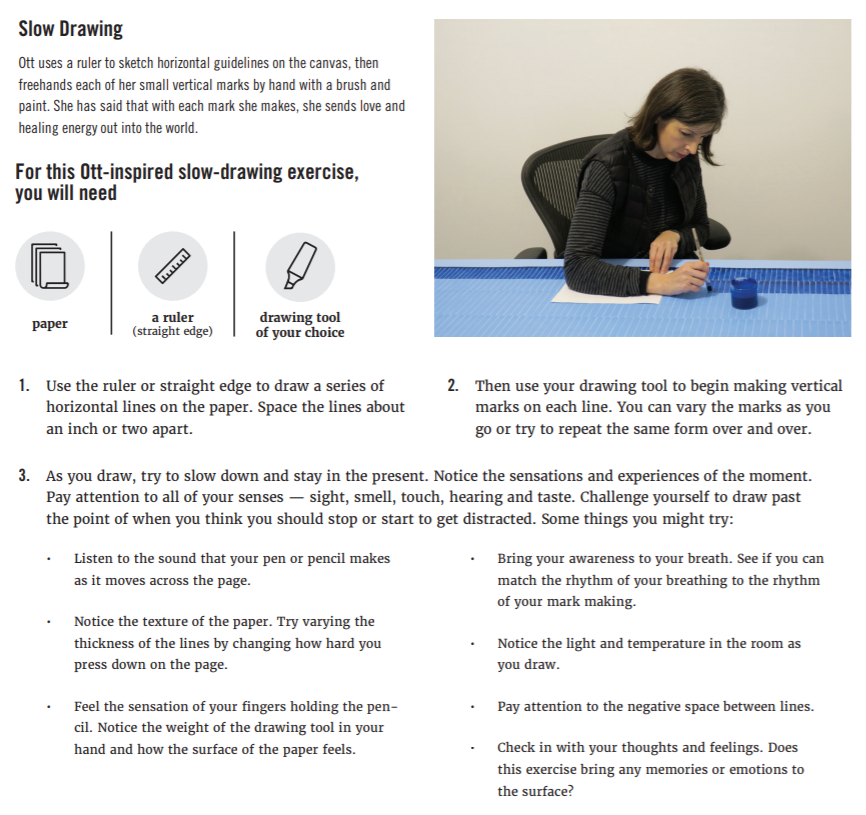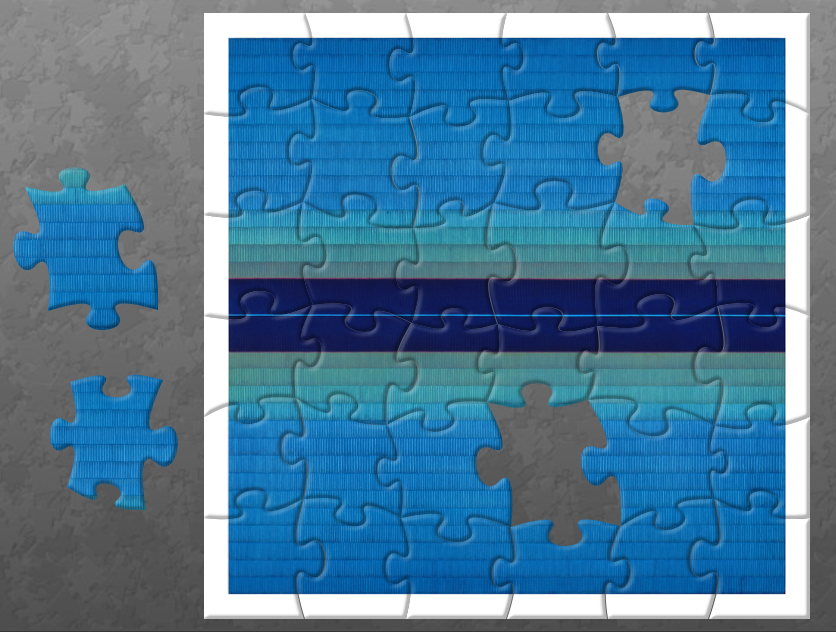This year Galleri Pictor and Munka folkhogskola (a Swedish folk high school and adult education center) hosted Slow Art events several times during the year: once in April for Slow Art Day, and three times during the summer for art students taking summer courses at the center. The slow looking sessions all took place at Galleri Pictor and each session focused on a single artwork – Clara Lundgren’s “Det var här” (“It was here”).

Arriving participants were welcomed and given a worksheet (in Swedish) containing instructions for eye palming along with slow looking prompts.
These instructions have been translated into English below:
— Materials: Artwork, Worksheets and Timer —
1) Eye Palming is a technique to relax the muscles around the eyes. Warm your hands by rubbing them together for a few seconds. Close your eyes and press your palms lightly against your cheeks, then cup your fingers over your eyes and eyebrows. Breathe slowly and deeply for three minutes.
2) Open your eyes slowly and look at the artwork with the same focus you had on your breathing.
– What do you notice?
– What colors, compositions, shapes and materials do you see?
– Does the artwork remind you of an event in your life?
– Do you think others notice the same thing as you?
If your mind wanders, try to focus again on the image. Look at the artwork for 10 minutes.
3) Relax again. Take a few deep breaths and notice any further thoughts you have about the artwork.
4) Write down reflections on the worksheet. Do this for 10 minutes.
5) Finally, we reflect together on our experiences of the image and how it felt to do the activity.
During the slow looking session Charlotte Fällman Gleissner, art expert and teacher at Munka Folkhögskola, kept track of the time transitions using a timer.
For the closing group reflection, Galleri Pictor repeated their successful concept from last year of sharing tea and biscuits together while participants discussed their slow looking session. Some of the reflections from this section of the event are included on the Pictor Gallery blog (in Swedish).
We love the focus on a single art work (the original idea for Slow Art Day was to spend one hour with a single artwork).
We can’t wait to see what Galleri Pictor and Munka folkhögskola come up with for Slow Art Day 2024 – and throughout the year. We also hope that future events include tea and biscuits, especially if they save some for us!
– Johanna, Ashley, Phyl and Jessica Jane













